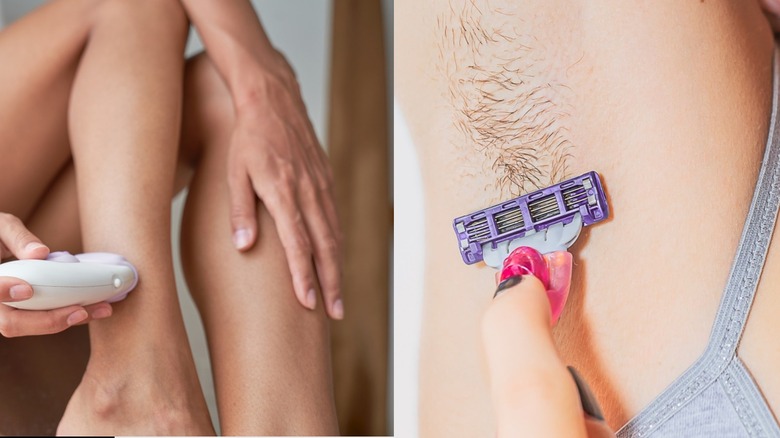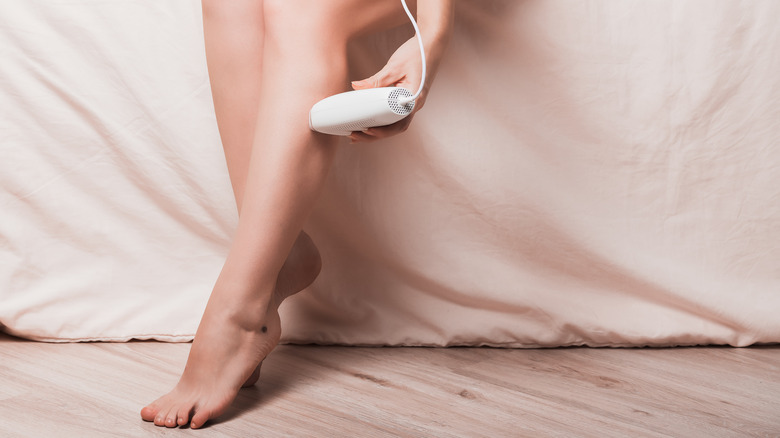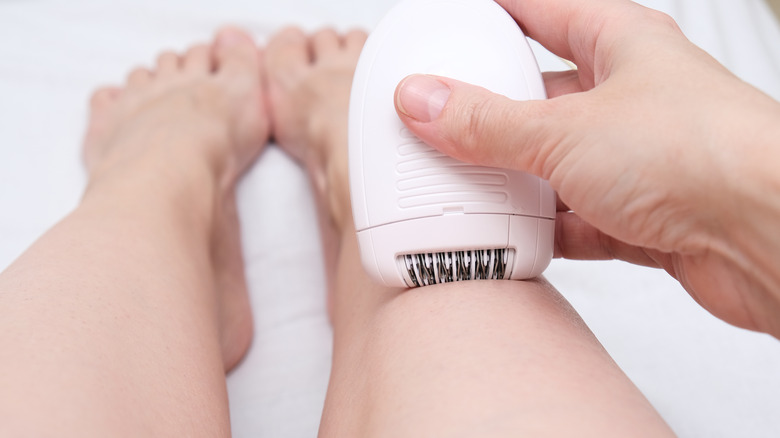Shaving Vs Epilating: What Is Best For Your Skin?
From pumice stones and sandpaper in the 1930s to shaving, waxing, sugaring, and laser hair removal in the more recent decades, hair removal methods have come a long way over the years. Did you know that even our ancestors, the cavemen, used sharp rocks to remove hair so that they could discourage insects from calling their beards home? Talk about desperate measures!
Despite the popularity of the movement to embrace body hair as a natural and beautiful part of being human, hair removal remains a staple in today's society. And if you're someone who enjoys smooth skin as part of your beauty regime, you probably want the best for yourself in terms of results and safety.
Shaving and epilating are two forms of hair removal that employ two different techniques. Shaving falls under the category of what is known as depilation, a hair removal method that removes hair from the surface level. Epilation, which is also the name of the other category, is when hair is removed from the roots. This includes waxing, sugaring, and using an epilator device. So, which is best for your skin — using an epilator or shaving?
Epilating is best for your skin and also offers longer-lasting results
What might likely put you off about epilating, especially if it's your first time, is the fear of pain. The way an epilator is built might be to blame. The device has what looks like multiple small tweezers attached to the end that you would typically hold over your skin's surface and once you turn it on, the tweezers whizz into motion to pull out the hairs from the roots. Even though the first time you use an epilator might cause some pain, it gets better with time and practice.
You're also going to be left with longer-lasting results as epilation removes the hairs from the roots itself, as opposed to shaving, where you're only razoring off the hair you see on the surface. When you use an epilator, your hair typically grows back a lot slower, giving you more time — up to four weeks, according to Braun — between each hair removal session.
Even if the prospect of shaving seems quick and easy, it poses other negative side effects to your skin like razor burns, razor cuts, inflamed or itchy skin, and even ingrown hairs. There are also some shaving mistakes you never knew you were making that could cause skin irritation. With epilation, you may notice some red and swollen skin right after you use the device, but it should subside within a couple of hours.
How to use an epilator for the best results
There are a few things you should know before using an epilator to remove hair. The key with any type of epilator — whether electric spring, disc-based, or tweezer-like devices — is to use it correctly to avoid unwanted injury and to get better results. Since there is a chance for inflamed skin right after epilating, it's best to follow this hair removal method a few hours before it's time for you to pull out that little black dress. If you're wondering about using the device on sensitive areas like your underarms and pubic region, the answer is yes.
Even though epilating has the advantage over waxing to tackle shorter hairs, you might want to shoot for a length of 5 millimeters and not let it get longer so you can avoid unnecessary pain. It is also recommended that you exfoliate both before and after you use an epilator. Hold the device at a 75-degree angle, stretch your skin out, and glide the epilator slowly in the opposite direction of hair growth.
Although epilating and shaving take about the same amount of time, you're going to want to take your time using an epilator device so you get a smoother finish. Ultimately, which method of hair removal works best for you is down to personal preference. However, hopefully you're now able to make a more informed decision.


